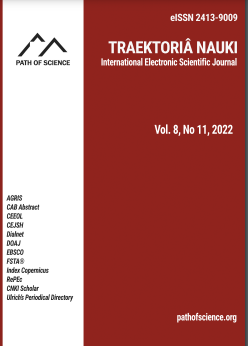Феромонна комунікація комах: етологічний підхід
Pheromone Communication of Insects: an Ethological Approach
Author(s): Oksana PalchykSubject(s): Communication studies, Sociology, Behaviorism, Environmental interactions
Published by: Altezoro, s. r. o. & Dialog
Keywords: social behavior of insects; search for a sexual partner; mating; pheromone communication; ethological approach;
Summary/Abstract: The article considers different approaches to insect pheromone communication as a form of social behaviour: zoological, physiological, genetic and zoopsychological. It is indicated that social behaviour extends to the mating process for insects, which is analysed in this paper from the point of view of various scientific approaches. Finding a sexual partner is considered physiologically as pheromone communication, genetically - features of sex chromosomes, zoologically – on the one hand directly, it’s the process of courtship, and on the other one, it’s the influence of environmental factors. The dependence of the mating process on internal physiological stimuli and environmental factors such as lighting (lunar or solar), nonstandard photoperiod, the presence of a substrate of a specific colour, temperature, wind speed, the presence of food objects, the spatial placement of sexual partners above the surface of the earth is considered on particular examples. The features of things on which insects are found, the visual image associated with pheromones, from nutrition, sexual maturity of individuals, and the complex action of factors. The dependence of the mating process on internal physiological stimuli, genetic characteristics, and environmental factors explains the non-randomness of this process and social dimension. The application of various ethological approaches allows for analysing often accompanying information obtained during chemical and biological research. At the same time, clarifying the integrity of the process of social behaviour is possible thanks to the ethological approach, which allows synthesising the obtained data into a single whole.
Journal: Traektoriâ Nauki
- Issue Year: 8/2022
- Issue No: 11
- Page Range: 2001-2005
- Page Count: 5
- Language: Ukrainian

